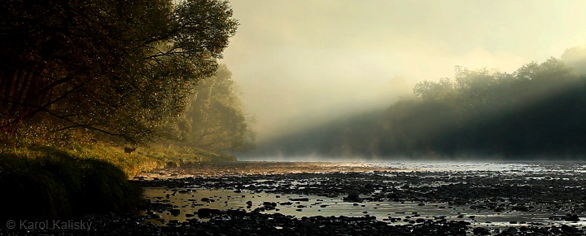
Wilderness Restoration
All continents of the world, with the exception of Europe, have preserved at least small samples of truly wild nature. Africa has its Serengethi, America its Yelowstone and the Amazonian rainforests, Asia the endless Siberian forests etc. We know that prior to the arrival of Europeans to North America there used to live herds of millions of bisons, pronghorns, deers and reindeers. We know how the ancient sequoia forests once looked like. However, we know hardly anything about the way European wild nature looked like. Current Europeans have the feeling that wild nature exists exclusively outside Europe and that it has never been part of Europe. We have completely forgotten that numerous herds of wisents and wild horses accompanied by their predators used to live here as well. In Europe, too, giant trees comparable to African baobabs or American sequoias used to grow here. We have forgotten that formerly we used to be part of this wild landscape.
We are reminded of this fact by the magnificent prehistoric paintings in the French cave Lascaux or the oldest written records of the ancient wilderness. From the historic records and archaeological finds we assemble tiny fragments, from which a picture of the real European wilderness emerges. Today, we are trying to imagine, how 6-metres long belugas swimming in great swarms in the Danube looked like, or the bears catching the salmons running from the Tatras to the Baltic Sea. Freely flowing rivers were bursting their banks and flooding large areas of the lowlands. On the hills towering from this flooded world thousand-year-old oak forests were growing, which seemed immortal to the contemporary people. In this diverse environment full of life our predecessors were able to meet terrific animals: aurochses, wisents, wild horses, water buffaloes or even European lions, which became extinct only at the beginning of our era.
Nowadays, however, we cannot find any sample of European wild nature anywhere. Its last remnants were destroyed centuries ago. There are no areas in Europe, which would be large enough and protected well enough for us to see migration of animals from the mountains into lowlands in these areas without these animals being hunted for. We don’t know how many herbivores these ecosystems are able to support and how these animals affect the vegetation or the populations of their predators and scavengers. Most of the rivers and their flood zones are polluted and regulated to such an extent that the life in them is only a tiny fraction of their real potential.
However, nothing is lost. Nature has a fascinating ability to recover. Under the Wilderness Restoration Program we want to create a space, which wilderness need for it to return. To return to the ancient mountains of Europe. Please support our efforts and help us with our goals.



